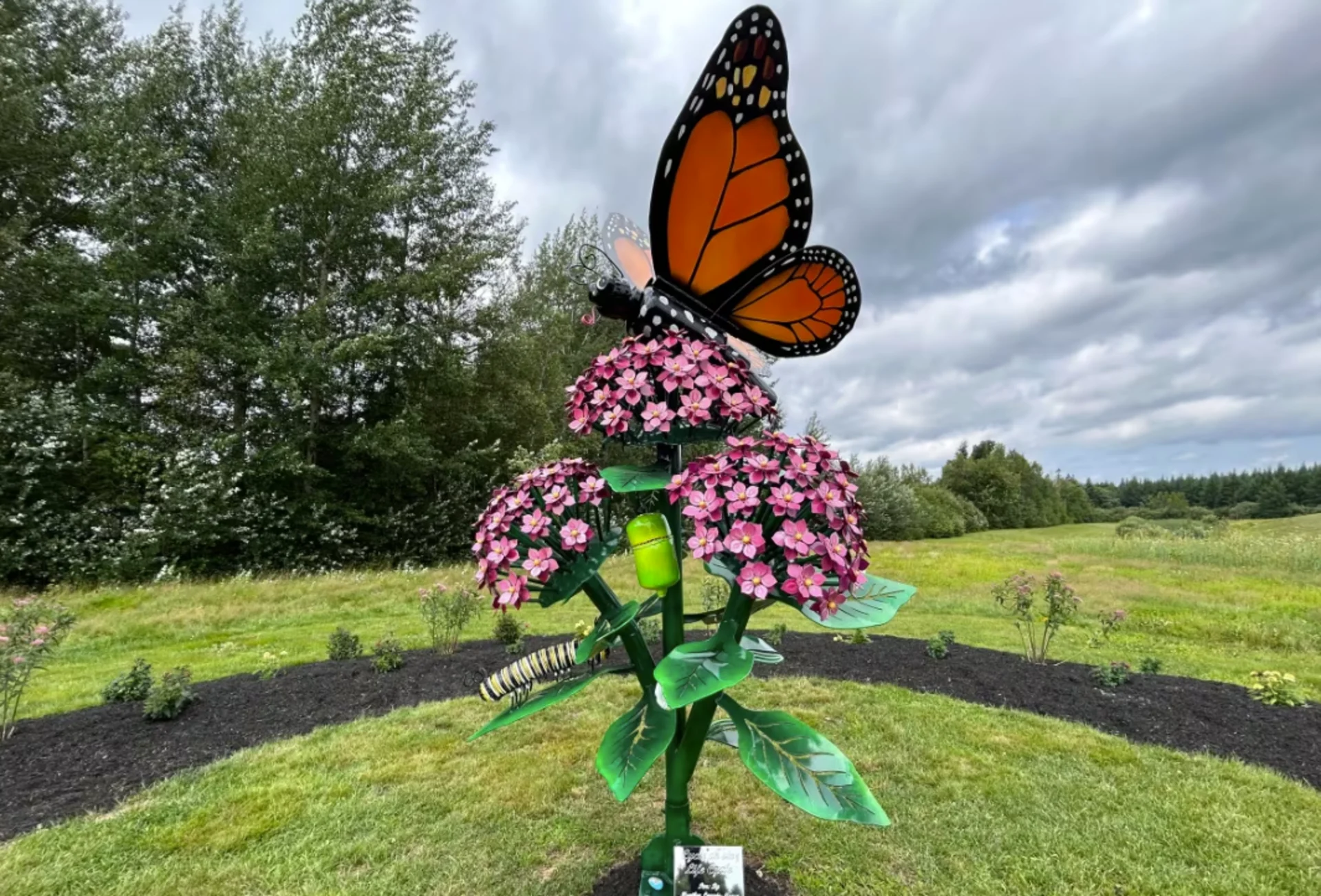
No single solution to increase endangered Monarch butterfly population
Planting more milkweed and rearing monarch butterflies could help dwindling populations, but there are bigger issues with the endangered species.
The reasons for the declining trend in the monarch butterfly population is spread across three different countries — Mexico, the United States and Canada, said Stephen Heard, a biology professor at the University of New Brunswick.
"There is almost never a single magic bullet, there are several different things you might have to do to make sure we always have these super-cool butterflies with us," he said.
He said the monarch butterflies roost together in about a dozen "very small" overwintering areas in central Mexico, which makes them vulnerable to both bad weather events and human disturbance.
Heard said some butterflies that move north feed on milkweed and die due to the use of pesticides in fields. "These are things that are almost entirely our fault."
SEE ALSO: Canada's MVPs (Most Valuable Pollinators)
He said a lack of milkweed — the only food source for monarch caterpillars — is also due to the change in land use. These plants get cleared out of fields, ditches and pond edges making it impossible for monarch larvae to find nutrition, said Heard.

Monarch caterpillar in its final stage — ready to form a chrysalis and turn into a butterfly. (Rhythm Rathi/CBC)
"If we don't have milkweed, we don't have monarchs."
The annual survey published in February by the World Wildlife Fund (WWF) and its partners indicated that the eastern migratory monarch butterflies occupying the overwintering areas in Mexico experienced a significant decline.
"The new data indicates that the species occupied only 2.2 acres during the 2023-2024 winter season, 59% less than the previous year when scientists observed 5.5 acres.," stated the WWF survey.
New Brunswickers in action
Many municipalities in New Brunswick have milkweed plants or gardens trying to help the young caterpillars prepare for their more than 4,000-kilometre overwintering journey to Mexico.
The city of Dieppe recently opened its second milkweed garden near its Aquatic and Sports Centre parking lot. A press release noted that the caterpillars can eat up to 200 times their body weight in milkweed before turning into monarch butterflies.
"It was important for us to recognize the role that municipalities can do in protecting endangered species," said spokesperson Alexandre Truchon-Savard.
He said an environmental group called Les Ami.e.s de la nature du sud-est du N.-B., reached out to the city to plant their first milkweed garden on Surette Street last year.

A ready-to-be-born monarch butterfly in its chrysalis. (Rhythm Rathi/CBC)
The same group partnered this year and planted the sports centre parking lot garden in late July. Only this time, the city added an artistic sculpture and information plaques to the area.
"We wanted to take an active part in protecting this important species," said Truchon-Savard.
Rhéal Vienneau, a member of Les Ami.e.s de la nature du sud-est du N.-B., is locally known as the "butterfly man" for his passion for raising monarch butterflies.
Vienneau said he used to raise and release about 400-500 monarchs every year, but has now downsized to a couple hundred, due to time constraints.
DON'T MISS: World's globetrotting animals at risk due to habitat loss, climate change
"I am lucky I have a place to do it, so I do it for pure enjoyment," said Vienneau who has been raising monarchs for about two decades.
He said a majority of caterpillars in the wild fall prey to predators. Also, if the milkweed is planted too close to each other it becomes home to several insects that prey on the monarch butterflies and caterpillars, he explained.
"My estimate would be probably 80 per cent of those small caterpillars don't survive."

Monarch butterfly chrysalises on the roof of an enclosure with milkweed plants. (Rhythm Rathi/CBC)
Vienneau said although he raises the butterflies in the safest possible manner, he does not promote the practice, as one has to have certain expertise to look after the different delicate life stages of the insect.
He said raising monarchs does not have a negative effect on the population, but is not the best solution to increase the numbers.
A three-country effort
He said the real solution is to plant milkweed and nectar plants all along the butterflies' migratory route from Mexico. This will give them enough nutrition throughout their journey.
"Rearing butterflies will have a minimum effect ... so it is better to just plant milkweed and spread the milkweed in different places," said Vienneau
According to Heard, a combination of planting milkweed, raising monarchs, avoiding the use of pesticides, and reducing habitat loss all go hand-in-hand, he said.
"If we all raise monarchs in our yards, that won't help at all if the overwintering sites in Mexico get clear cut," said Heard.
He said individuals raising monarchs may not make a huge dent, but it may have an impact over time. The same goes for planting milkweed and maintaining habitat.
"If everyone takes a little step themselves, then we have got a good place," said Heard.
"It is headed in the right direction in terms of societies caring about it ... it is very difficult to predict what happens."
Thumbnail image credit to Rhythm Rathi/CBC News.
This article, written by Rhythm Rathi, was originally published for CBC News.









